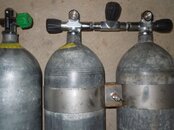Currently in the process of putting together an LP72 doubles set.
Visually I know the neck transitions can vary in both exterior slope as well as how they feel on the inside. Wall thicknesses might vary as well. I'll have to look up Luis' old post.
Does anyone have practical experience with matching these tanks as doubles? How much variation is there between years and manufacturers and is it something worth worrying about?
Visually I know the neck transitions can vary in both exterior slope as well as how they feel on the inside. Wall thicknesses might vary as well. I'll have to look up Luis' old post.
Does anyone have practical experience with matching these tanks as doubles? How much variation is there between years and manufacturers and is it something worth worrying about?





